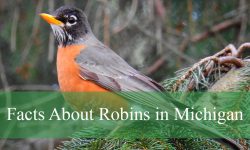In the misty mornings of Wisconsin’s wetlands, a haunting, trumpet-like call echoes across the reeds. Silhouetted against the rising sun, tall, elegant birds glide gracefully above the marsh—the cranes. These magnificent creatures have become enduring symbols of wild beauty and resilience in the American Midwest.
From the sprawling Horicon Marsh to the Crex Meadows Wildlife Area, cranes are not just passing migrants; they’re year-round icons of the state’s thriving wetlands. Two distinct species—the Sandhill Crane and the Whooping Crane—call Wisconsin home, each with its own unique story of survival, adaptation, and conservation.
In this in-depth article, we’ll uncover the truth about cranes in Wisconsin wetlands you didn’t know—their behaviors, migration secrets, nesting rituals, ecological roles, and the remarkable conservation success that brought one species back from the brink of extinction.
Cranes: Symbols of Wilderness and Renewal

The Two Species of Wisconsin Cranes
Wisconsin is one of the few places in North America where you can see both the Sandhill Crane (Antigone canadensis) and the Whooping Crane (Grus americana).
- Sandhill Crane – The more common of the two, these birds have grayish plumage, long legs, and red crowns. They’re among North America’s oldest living bird species, with fossils dating back over 2.5 million years.
- Whooping Crane – Standing nearly five feet tall, the whooping crane is one of the rarest birds on Earth. With striking white plumage, black-tipped wings, and a loud, resonant call, it represents one of the greatest wildlife comeback stories in U.S. history.
A Shared Habitat
Both species depend on Wisconsin’s wetlands, marshes, and floodplains—ecosystems rich in biodiversity. These wetlands offer shallow water for feeding, isolated spots for nesting, and safe roosting sites away from predators.
Sandhill Cranes: The Voice of Wisconsin’s Wetlands
A Familiar Sight
The Sandhill Crane is now a regular feature across Wisconsin, especially during spring and fall migrations. Once nearly wiped out by habitat loss and hunting, these cranes have rebounded spectacularly thanks to conservation efforts and wetland protection laws.
Today, Wisconsin hosts tens of thousands of Sandhill Cranes, and their numbers continue to rise each year.
Behavior and Communication
Sandhill Cranes are known for their complex calls—a rolling, bugling sound that can carry for miles. These calls serve as communication between mates, families, and migrating flocks.
Their elaborate courtship dances are among the most breathtaking sights in the animal kingdom. Cranes leap, bow, flap their wings, and toss sticks in the air—a ritual of joy, bonding, and strength.
Diet and Feeding
Sandhill Cranes are omnivorous. Their diet includes:
- Grains, corn, and seeds from agricultural fields
- Frogs, snails, and small fish from wetlands
- Berries, insects, and roots
They often feed in shallow water or upland fields, using their long bills to probe soil for food.
The Whooping Crane: A Miracle of Conservation
A Species on the Edge
The Whooping Crane nearly vanished in the early 20th century. By 1941, only 21 individuals remained in the world. Habitat destruction, hunting, and egg collection devastated their population.
However, decades of determined conservation work—led by organizations like Operation Migration, The International Crane Foundation, and the U.S. Fish and Wildlife Service—have helped bring them back.
Wisconsin’s Role in Recovery
Wisconsin is now central to the Whooping Crane reintroduction program. The Necedah National Wildlife Refuge, located in central Wisconsin, serves as a primary nesting and release site.
From 2001 to 2016, young cranes were trained to follow ultralight aircraft on migration routes from Wisconsin to Florida—a groundbreaking method that successfully established a new wild migratory population.
Today, about 70–80 Whooping Cranes live in the eastern United States, with Wisconsin as their primary breeding ground.
Distinguishing Features
Whooping Cranes are larger and more striking than Sandhills. They have pure white feathers, black wingtips, and red-black faces. When flying, they stretch their necks and legs in a perfectly straight line—an elegant silhouette against the sky.
Life in the Wetlands
Nesting and Breeding
Both crane species rely heavily on wetlands for nesting. They build mound-like nests of reeds and grasses in shallow water, providing protection from predators.
- Breeding Season: April through June
- Clutch Size: 1–2 eggs per pair
- Incubation: 29–31 days
- Parental Care: Both parents share duties, fiercely guarding their chicks
Cranes form monogamous pairs and often mate for life. Their pair bonds are reinforced through dancing and synchronized calls.
Migration Secrets
Cranes are long-distance migrants, capable of traveling over 1,000 miles between breeding and wintering grounds. Wisconsin’s cranes typically migrate to the southeastern U.S., particularly Florida and Georgia, during winter.
They rely on thermal air currents to soar high, conserving energy during migration. Large flocks form graceful V-shaped patterns that stretch across the autumn sky—a powerful symbol of nature’s endurance.
Seasonal Behavior
- Spring: Return to Wisconsin for breeding and nesting.
- Summer: Raise young in wetlands and nearby meadows.
- Fall: Gather in large flocks before migration.
- Winter: Spend the season in warmer southern wetlands.
Cranes and Their Ecosystem
The Role of Cranes
Cranes are keystone species, influencing the structure of wetland ecosystems. Their feeding behavior stirs up mud and redistributes nutrients, supporting aquatic plants and invertebrates.
They also disperse seeds through droppings, aiding plant regeneration. In agricultural fields, their foraging helps control pest populations naturally.
Cranes and Biodiversity
Where cranes thrive, biodiversity flourishes. Healthy crane populations indicate clean water, stable wetlands, and abundant food sources.
Threats to Their Survival
Despite conservation success, cranes still face several challenges:
- Wetland drainage and urban expansion
- Collisions with power lines
- Predation on eggs and chicks
- Climate change, which alters wetland hydrology
In Wisconsin, habitat preservation remains the single most important factor for ensuring the survival of both species.
Cultural Significance of Cranes
Symbols of Longevity and Hope
Across cultures, cranes are symbols of grace, longevity, and fidelity. In Japanese tradition, folding 1,000 paper cranes represents peace and healing—a symbol mirrored by Wisconsin’s efforts to restore the Whooping Crane population.
Native American tribes also viewed cranes as messengers between the earth and sky, often featuring them in art and legends tied to balance and harmony.
The Wisconsin Connection
For many Wisconsinites, the return of the cranes each spring marks the renewal of life and the resilience of nature. Their haunting calls echo across the marshes, signaling the changing of seasons and the ongoing success of conservation.
Where to See Cranes in Wisconsin
1. Horicon Marsh
One of the largest freshwater marshes in the United States, Horicon Marsh is a premier location to observe cranes, especially during migration. In fall, thousands of Sandhill Cranes gather here before flying south—a breathtaking spectacle.
2. Necedah National Wildlife Refuge
The heart of Whooping Crane recovery, Necedah offers a rare chance to see these endangered birds nesting and raising their young. Designated viewing areas and trails allow respectful observation.
3. Crex Meadows Wildlife Area
Located in northwestern Wisconsin, this refuge provides ideal breeding grounds for Sandhill Cranes. Autumn mornings here resonate with the sound of thousands of bugling cranes.
4. Aldo Leopold Foundation Lands
Famed naturalist Aldo Leopold wrote beautifully about cranes in his classic A Sand County Almanac. The lands he helped conserve near Baraboo remain a haven for these iconic birds.
Fascinating Facts About Wisconsin’s Cranes
- Cranes have existed for over 2.5 million years, making them one of Earth’s oldest bird families.
- Whooping Cranes can live up to 30 years in the wild and even longer in captivity.
- Sandhill Crane populations now exceed 600,000 across North America.
- Cranes mate for life, and pairs perform “unison calls” to strengthen bonds.
- Baby cranes, called colts, can walk and swim within 24 hours of hatching.
- Whooping Crane eggs are about 4 inches long, among the largest of any North American bird.
- Cranes’ wingspans can reach 7 feet, allowing efficient gliding during migration.
- The International Crane Foundation, located in Baraboo, Wisconsin, is the only place in the world housing all 15 crane species.
Conservation and the Future of Cranes
A Wisconsin Success Story
Few wildlife stories are as inspiring as the comeback of the Whooping Crane. Through decades of dedication, Wisconsin became the heart of one of the world’s most ambitious conservation projects.
Continued collaboration among federal agencies, conservation groups, and citizens has ensured that both crane species not only survive but thrive.
Challenges Ahead
Despite progress, conservation remains an ongoing effort. Maintaining wetlands, preventing power line collisions, and addressing climate change are critical. The preservation of cranes ultimately depends on our ability to protect their habitats—wetlands that also purify water, reduce flooding, and support countless other species.
How You Can Help
- Support organizations like the International Crane Foundation.
- Volunteer for bird counts and habitat restoration projects.
- Advocate for wetland conservation policies.
- Report crane sightings to citizen science databases like eBird.
Myths and Misconceptions About Cranes
Myth |
Truth |
|---|---|
Cranes are the same as storks. |
False. Cranes are a separate bird family with different behaviors and anatomy. |
Cranes are dangerous to humans. |
False. They are shy, non-aggressive birds that avoid human contact. |
Whooping Cranes no longer exist. |
False. They’re rare but recovering, thanks to Wisconsin’s efforts. |
Cranes only live in remote areas. |
False. Many are found near farmlands and suburban wetlands. |
All cranes migrate. |
False. Some Sandhill Crane populations in Florida and Mississippi are non-migratory. |
FAQs About Cranes in Wisconsin Wetlands
Are cranes endangered in Wisconsin?
The Whooping Crane is endangered, but the Sandhill Crane population is healthy and growing.
When is the best time to see cranes?
Fall and spring migrations (September–October and March–April) offer the most spectacular viewing opportunities.
Do cranes stay in Wisconsin year-round?
Sandhill Cranes may overwinter in southern Wisconsin if conditions are mild, but most migrate south.
What do cranes eat?
Cranes are omnivores, feeding on grains, small fish, amphibians, insects, and roots.
Can cranes be kept as pets?
No. Cranes are protected under the Migratory Bird Treaty Act, and it is illegal to possess them without permits.
Conclusion
The truth about cranes in Wisconsin wetlands is a story of endurance, renewal, and hope. From the ancient Sandhill Cranes that dance across farm fields to the majestic Whooping Cranes reborn from near extinction, these birds embody the resilience of nature and the power of conservation.
Their calls—haunting and beautiful—remind us that the wild still thrives in the heart of America. Protecting the wetlands they depend on is not just about saving birds; it’s about preserving the soul of Wisconsin’s landscapes for generations to come.
So next time you hear that trumpet echoing across a misty marsh, pause for a moment. You’re hearing one of Earth’s oldest voices—a living symbol of what happens when humanity and nature work together to keep wild beauty alive.






